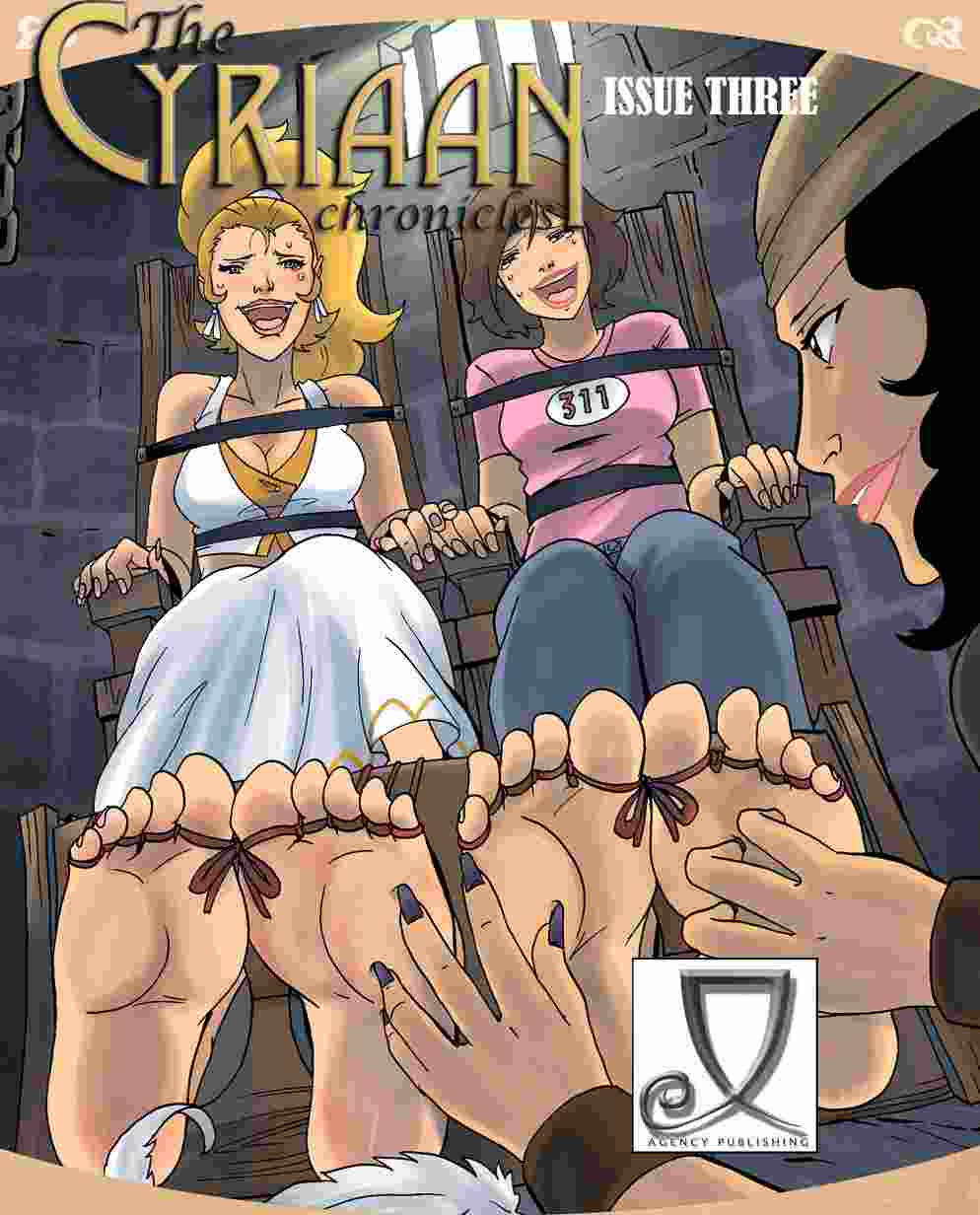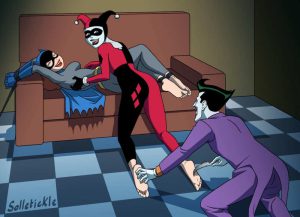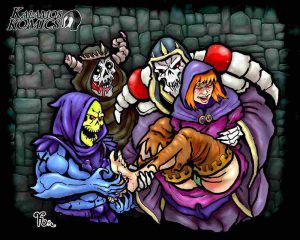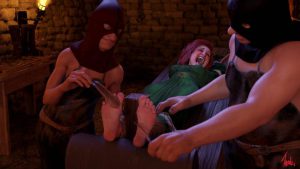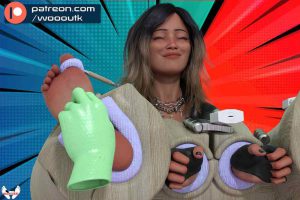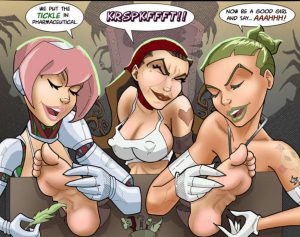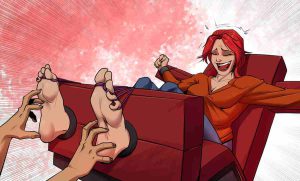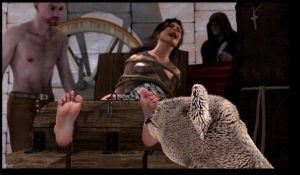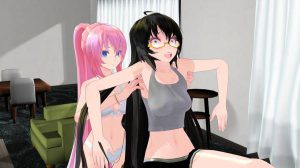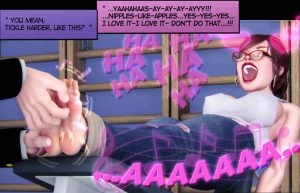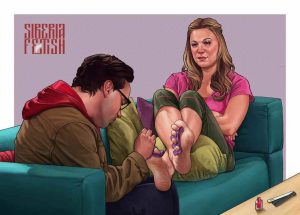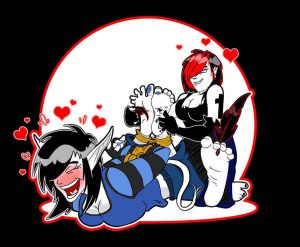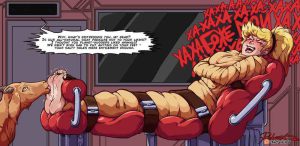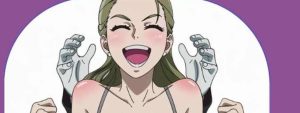Contents
- 1 1) Do you want to tell us something about yourself and your art?
- 2 2) Can you tell us about your comic book saga The Agencies? How did the idea come about, where do you draw inspiration from? What are your favorite episodes?
- 3 3) When you realize tickle scenes, do you take into account the suggestions and preferences of your fans, or your own personal tastes?
- 4 4) Online there are countless photos and videos of tickling sessions. In your opinion, what do illustrations offer more than images of real scenes?
- 5 5) In your opinion, what makes tickling so interesting for fans of this phenomenon?
- 6 6) Which is your favorite character in your comic book series, and which tickle torture scene are you most proud of?
- 7 7) Do you have any particular artistic goals for the future?
- 8 8) Do you think AIs will end up enriching or impoverishing the art of tickling representations?
1) Do you want to tell us something about yourself and your art?
My name is Oblesklk and I’m older than dirt. I suppose a more polite way to put it is that I’ve been a member of the online tickling community ever since there was one, in those rosy, glistening days of the 1990s. Over the years, I’ve worn many hats, but a traditional artist has not been one of them. I tried to teach myself to draw once, and came away with a healthy respect for those who have invested their time to perfect their craft. They are more focused than I.
Leggi tutto: Tickle Artists #53: Interviews with OblesklkSo I do not draw. But I do write, recruit very talented authors, and recruit artists to help me build worlds. I have created a healthy tickling comic book universe that started in the late 90s, and is still going strong. The titles in that universe include The Agencies, The Agencies: Frontiers, The Ruthless, Yelena, The Cyriaan Chronicles, Tickle Magnet, and Hunted. The characters in these stories often overlap, their stories merging with one another in fun ways.
I’ve also produced hundreds of tickling videos under the TickleTown brand, released a tickling video game called The Cyriaan Chronicles #10 December 2022, and about to release my second tickling video game called Tickle Magnet next month! I’ve also dabbled in tickling animation here and there.
2) Can you tell us about your comic book saga The Agencies? How did the idea come about, where do you draw inspiration from? What are your favorite episodes?
The Agencies takes place 100 years in the future, after a cataclysmic event (which we’ll learn about in more detail in The Ruthless) wipes out about 90% of humanity. The survivors have stabilized their numbers, and are trying to rebuild civilization. Governments have all but lost control over vast sections of humanity, replaced by corporate entities with an undying thirst for power.
The virus that nearly wiped out humanity also left a fraction of its female survivors with gifts. These gifts manifest differently, but allow the users to manipulate their environments. The Agency is an organization based in what is modern day Seattle that aims to keep the power players in balance with each other, to make sure no one tips the scales entirely in one favor. There are several such agencies spread around the world, but this one largely focuses in the pacific northwest. The Agencies largely hire these females with powers as super spies.
The idea came about because I wanted to explore the notion of a doomsday scenario…that wasn’t entirely doom and gloom. There was an interesting theme throughout the story that even though women were still wielding insane power, they remained second class citizens, largely controlled by male dominated companies.
I draw inspiration from being able to explore new story arcs and characters in these stories, and seeing which ones resonate with fans.
My favorite episode is the most controversial one: The Agencies #13. Spoiler alert: a main character dies after suffering brutal and intense tickle torture. I consulted with Dave2112 quite a bit on this issue. I had kind of resigned myself to the fact that the character had to die in that situation, any other outcome would not have been believable. I remember talking on the phone with him for like two hours talking about the plot points, the twins going back and forth, and after hanging up, being resolved to writing the issue like it ended up. The entire scene is pretty intense to write, especially in the context of a tickle torture comic book, where you’re trying to tie these complex emotions like the sense of duty Yang feels to her father’s organization, mixed with the relationship with her sister, mixed with the newfound love and peace she found with Succubus, mixed with Yin’s pure rage, and keep all that flowing with the tickling action is…challenging. It is a powerful issue, and some fans understandably hate it to this day.
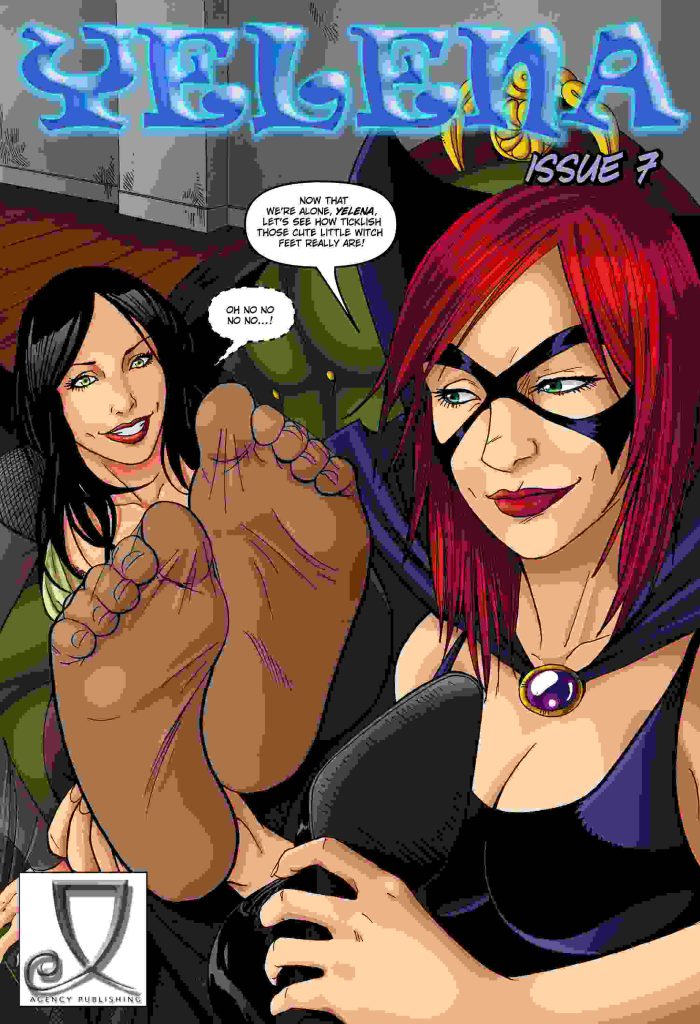
3) When you realize tickle scenes, do you take into account the suggestions and preferences of your fans, or your own personal tastes?
I love this question quite a bit, because it’s taken me a very long time as an author to find my peace with that very question.
First, I don’t put my personal preferences into scenes. I don’t find my own work sexy. I know that’s probably the worst marketing angle I could publish, but I’m honest to a fault sometimes. Since my own work is a known commodity to me, it’s not novel, or new, or exciting in that same way when you see an amazing mainstream tickling scene for the first time that you had no clue was coming. That sense of shock, awe, and “holy shit” isn’t there with my own stuff…because I created it.
Second, I’ve tried to be at peace with the fact you cannot please everyone. I used to take that feedback more personally in my younger days…that something didn’t have enough foot tickling in it or too much. I’ve grown to appreciate that we are actually quite varied in our individual tickling tastes, and I love that. So I try to vary the scenes the best I can, because I’m hoping someone out there might appreciate that the spinning wheel of tickling fate landed on their exact fetish for this one brief moment of time, in this one scene in this one tickling comic issue. What a glorious thought that someone might be seriously happy because of a scene in something we produced.
It might not happen often, but it’s an aspiration.
4) Online there are countless photos and videos of tickling sessions. In your opinion, what do illustrations offer more than images of real scenes?
I love this question, too!
I come at this from an angle of both having produced comic books over several decades and producing tickling video/images. I think illustrations can be more passionate, and more real in the right hands.
I’ll tackle the passionate angle first. While some illustrations may be purely for profit, there generally holds a large amount of passion from the artist. The scene chosen. The outfits. The lighting. Every fold of fabric and cloth. Every wave of the hair. Every depiction of laughter from the ticklee, or the anticipation. Good scenes are dripping with passion from those who created them. Images can definitely have that, too. I feel images tend to be more commoditized, which is sadly quite the opposite of passion for me. They can be a call to action, instead of just “being.” I’m not saying all images are like this, of course, but after seeing so many coming from so many talented studios over the years, the trend is difficult to entirely ignore.
It’s the spirit, imagination, and passion of the artist that really brings to life their original characters. Or perhaps it’s a fan art of an established character that already has a strong personality. That can elicit quite a strong reaction from a fan. When I see a tickling image, it’s generally someone or some folks I don’t know. Therefore, it’s harder for me to get emotionally invested in the scene. To juxtapose, if a tickling image included some women I knew in real life, that would be the hottest on planet Earth (to me). But they don’t. So it’s not like it’s not real, but it’s harder for me to get emotionally invested in the action.
5) In your opinion, what makes tickling so interesting for fans of this phenomenon?
From a tickler’s point of view, to control someone, so viscerally, so thoroughly, to command both body and mind, to bend them to your every whim and desire, without hurting them in any traditional sense, and taking them to such outrageous stretches of their preconceived boundaries is such an intoxicating thought it demands exploration in both fantasy and reality.
6) Which is your favorite character in your comic book series, and which tickle torture scene are you most proud of?
Stacia Walton, aka The Ruthless, is my favorite. If I’m not supposed to have favorites, I apologize in advance, but you made me swear on a stack of MAD magazines before the interview. So I suppose I should be truthful, lest the spirit of Alfred E. Neuman haunt my dreams. She’s modeled after my wife, whom I’ve known since we were both children. So it’s not hard to see why she’s my favorite.
Starting in The Ruthless #13, Stacia gets wrecked so hard, she’s tickle tortured in four issues straight. No breaks, no intermission, just brutal tickle torture from issues The Ruthless #13-#16, and the climax to that story depicts Stacia’s orgasm that blows up an entire galaxy with her energy signature, killing the father of her newly created child in the process. Oops. I loved the wonderful juxtaposition in her being a living goddess in issues 1-12, only to see her getting completely humiliated in these issues.
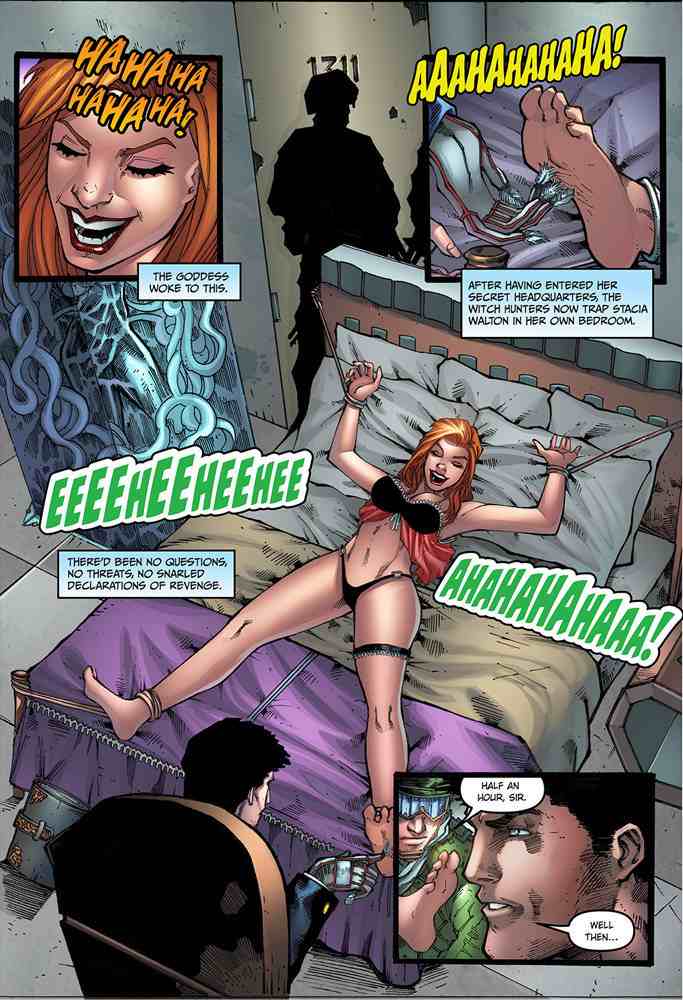
7) Do you have any particular artistic goals for the future?
I want to keep focusing on delivering powerful stories, memorable characters, and exciting tickling scenes in my comics. I do have rather intricate plans for an “Infinity Stones” level of crossover amongst my multiple comics and timelines and its characters. That will take another decade to set up and flesh out. It’s going to be a lot of fun, and I’ve already dropped hints at what’s going to happen over the years in both the comics and video game I published last year.
8) Do you think AIs will end up enriching or impoverishing the art of tickling representations?
I think it will enrich representation by allowing those who previously lacked a means of expressing themselves a more accessible means of doing so.
It’s still several iterations away from producing quality tickling images, but it will be there someday. It will be curious to see how the governments and legal infrastructures deal with AI issues in the coming decade. Because there are a lot of things to sort out.
